Physical Address
304 North Cardinal St.
Dorchester Center, MA 02124
Physical Address
304 North Cardinal St.
Dorchester Center, MA 02124
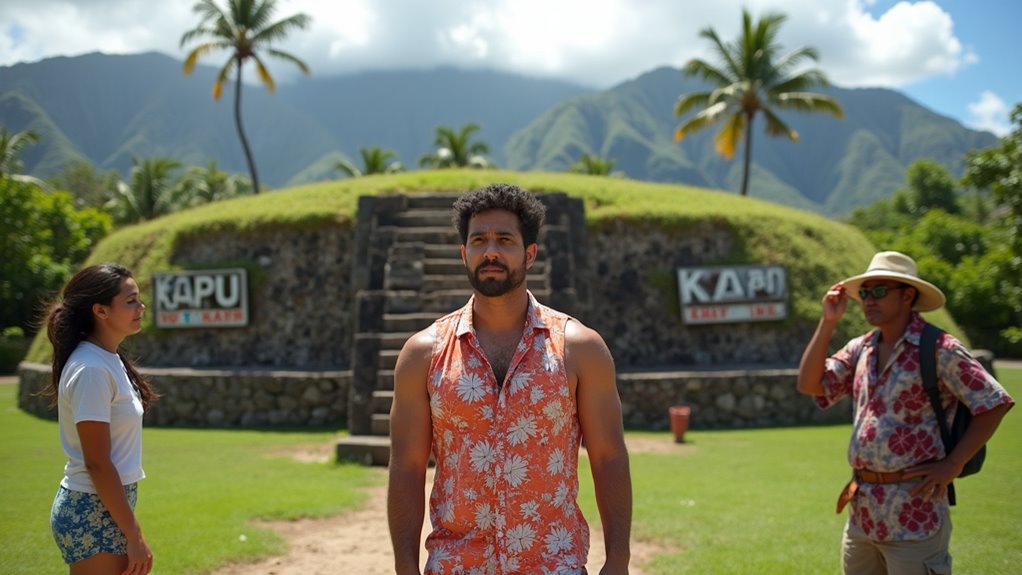
Learn which tourist blunders can ruin your Hawaiian vacation and how locals wish you'd respect their island home.
When visiting Hawaii, avoid disrespecting sacred sites, illegal parking on scenic routes, approaching protected wildlife, trespassing on private property, ignoring ocean safety warnings, venturing onto restricted beaches, using single-use plastics, staying in illegal vacation rentals, and disrupting local neighborhoods. Don’t treat heiau as photo ops, park only in designated areas, keep proper distance from marine mammals, and always heed beach warning flags. These simple considerations will transform you from an intrusive tourist into a welcomed visitor.
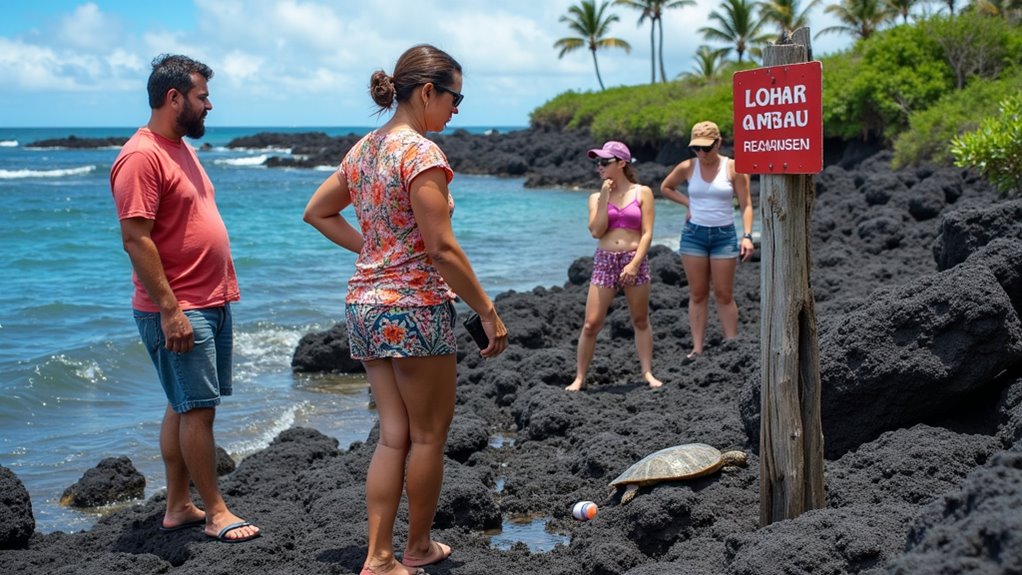
While Hawaii’s breathtaking landscapes and abundant cultural heritage attract millions of visitors each year, many travelers unknowingly make mistakes that can harm the environment, disrupt local communities, or even put themselves in danger.
You might be tempted to ignore safety guidelines at volcanic sites or climb sharp lava rocks for that perfect photo—don’t. These actions lead to serious injuries. Some travelers have disrespectfully roasted marshmallows over active lava flows, ignoring both safety rules and Hawaiian cultural beliefs.
Similarly, harassing wildlife or failing to use reef-safe sunscreen damages fragile ecosystems. Be cautious when exploring outdoor areas as Hawaii is home to several spider species that may surprise unsuspecting visitors.
Blocking roads for pictures, parking illegally, or trespassing on private property frustrates locals and can result in fines.
Don’t underestimate travel times between destinations or forget to book activities in advance. The islands’ popularity means spots fill quickly, and poor planning leads to disappointment rather than paradise.
Hawaii’s sacred sites hold profound cultural significance that extends far beyond their visual appeal. When you visit heiau (temples), burial caves, or petroglyph fields, approach them with the same reverence you’d show a church or cemetery.
Locals are increasingly frustrated by travelers who treat these sacred spaces as mere photo backdrops.
To respect Hawaiian cultural sites:
Remember that your ignorance isn’t an excuse for disrespect. While you might appreciate the beauty of these locations, much like how visitors marvel at the Cuban spider species in their natural habitat, respecting their sacredness is essential. These aren’t just tourist attractions—they’re living cultural treasures that deserve protection and reverence from everyone who visits. Places like Waimea Valley attract over 400,000 visitors annually and contain 78 identified cultural sites, including shrines and living areas with deep spiritual importance.
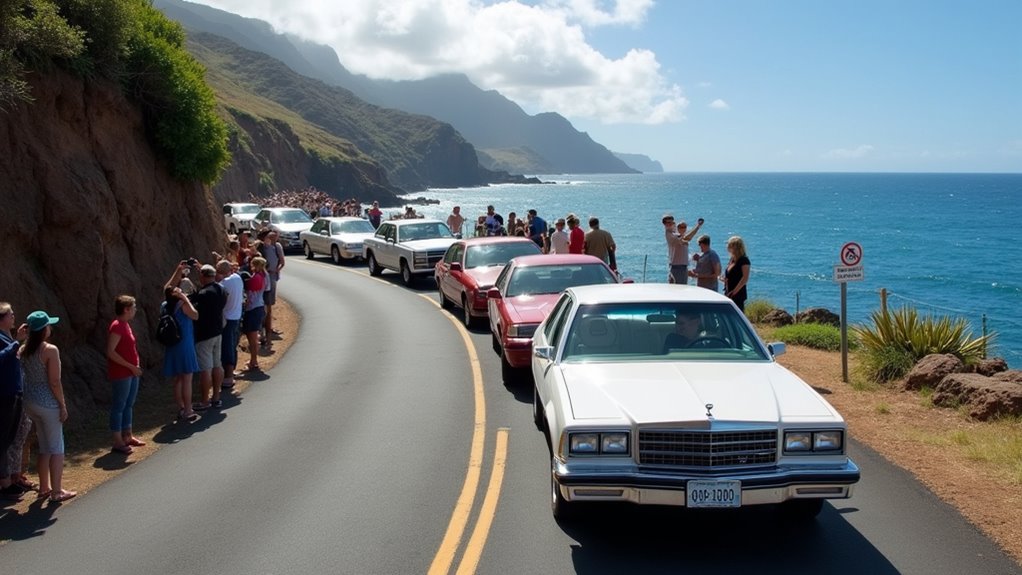
Scenic drives along Hawaii’s coastlines offer breathtaking views, but they’ve also become hotspots for dangerous parking behaviors that frustrate locals and create serious safety hazards.
When you pull over abruptly for that perfect Instagram shot on narrow roads like Hana Highway, you’re risking accidents and causing traffic jams that affect residents. Those no-parking zones exist for good reason—violators face $35 fines plus $200 surcharges under state law. Many travelers make the common mistake of ignoring posted signs and parking wherever they find a scenic view.
Popular areas like Waikamoi Stream Bridge and Twin Falls are especially problematic. Instead of contributing to these issues, use designated pullouts, plan ahead with parking reservations, or consider guided tours. Hawaii law strictly prohibits parking in non-designated areas with fines exceeding $200 for stopping in bike lanes or other prohibited zones.
Remember that your momentary photo stop impacts local communities, cultural sites, and ecosystems. Respect for these islands means following parking regulations and prioritizing safety over social media moments.
Approaching wildlife might seem harmless, but federal law strictly prohibits getting closer than 100 yards to protected marine species in Hawaii’s waters. This includes humpback whales, spinner dolphins, and sea turtles—whether you’re in a boat, kayak, or using a drone.
When enjoying Hawaii’s marine environment, remember these essential guidelines:
Be aware that Hawaii’s waters are home to several shark species that deserve the same respectful distance as other marine wildlife.
Violations can result in significant penalties under both federal and state laws. Besides legal consequences, getting too close stresses animals, disrupts feeding patterns, and interferes with natural behaviors. Hawaiian monk seals deserve special attention, and visitors should remain at least 50 feet away from these endangered mammals.
You’ll actually enjoy a more authentic experience by observing respectfully from a distance.
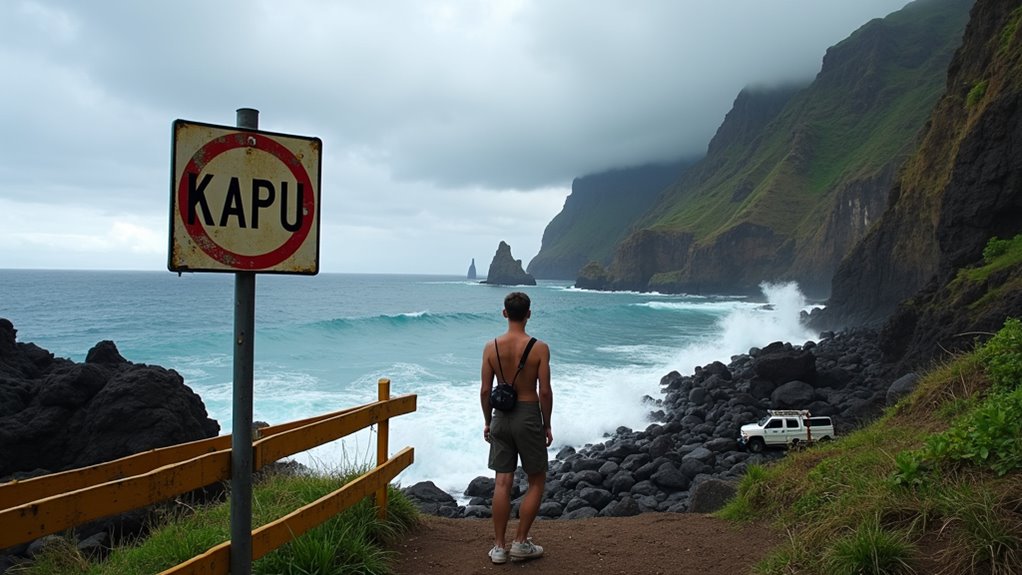
While respecting marine wildlife protects ocean ecosystems, staying on authorized paths safeguards Hawaii’s fragile land environments. Don’t assume all beaches and trails are open to the public—many cross private property or sacred Native Hawaiian sites.
Research public access points before your trip and always heed warning signs, closures, and weather alerts. Hawaii’s shoreline access laws can be confusing, but that’s no excuse for trespassing. Hawaii law guarantees the public has right to access along beaches and shorelines below the upper wave wash area.
Prepare properly for hikes with adequate water, appropriate footwear, and supplies.
When visiting cultural or spiritual locations, follow posted protocols like removing shoes or avoiding photography. Remember that ignoring regulations can result in hefty fines or even legal charges.
Beyond legal consequences, unauthorized access can damage sensitive ecosystems and disrespect local communities who call these islands home. Unlike Jamaica where visitors need to watch for dangerous animals, Hawaii’s main outdoor risks come from environmental hazards and accessing restricted areas.
Hawaii’s stunning blue waters may look inviting, but they claim the lives of travelers at a rate ten times higher than locals. Most drownings occur because visitors underestimate local ocean conditions and ignore posted warnings. Your mainland swimming experience won’t necessarily translate to Hawaii’s powerful currents and unpredictable waves. Many travelers maintain a vacation mindset that leads them to dismiss potential dangers despite clear warnings. While Oahu’s beaches are particularly popular, they require the same level of caution as any Hawaiian shore.
When visiting Hawaii’s beaches, always:
Remember that Waikiki, Hanauma Bay, and North Shore beaches see the highest tourist fatalities. Don’t let overconfidence turn your dream vacation into a tragedy.
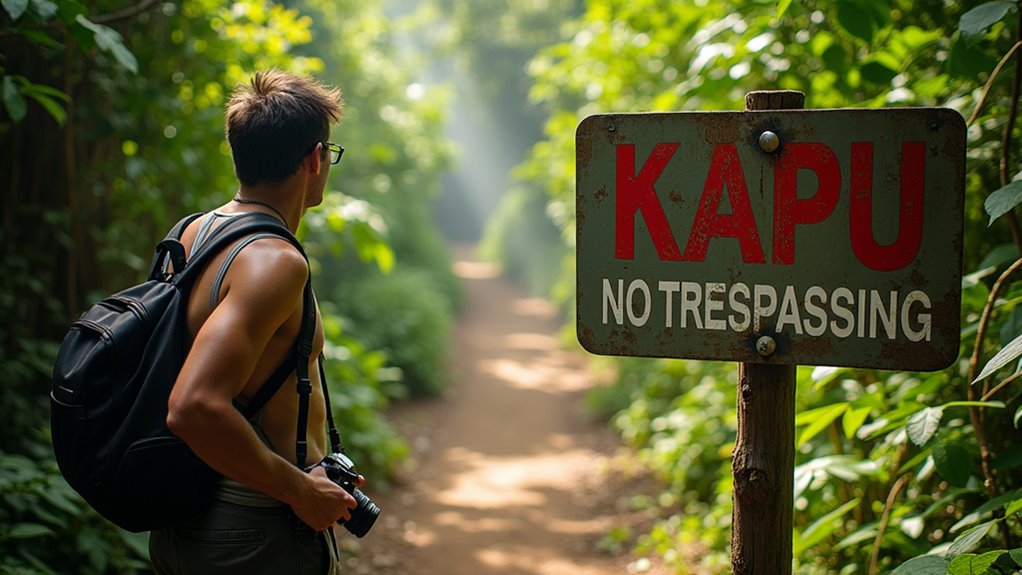
Ever seen those breathtaking Instagram spots that seem too good to be true? In Hawaii, they often are—at least legally. Many of these “secret” locations are on private property, and accessing them means you’re trespassing.
This isn’t just about breaking the law. You’re risking fines, arrest, and potential injury on unfamiliar terrain. Many private areas contain cultural or historically significant sites that can be damaged by visitor traffic. In Hawaii, trespassing on agricultural lands or properties with livestock is specifically classified as second-degree trespass. Unlike what many visitors believe, Hawaii is home to several snake species that may pose dangers in remote areas.
Trespassing also strains relationships between travelers and locals, who rightfully protect their land and heritage. The economic impact adds up through property damage and enforcement costs.
Instead, use designated public access points or book guided tours. You’ll still experience Hawaii’s beauty while respecting property rights, supporting local businesses, and preserving cultural treasures.
Those innocent plastic water bottles, straws, and beach toys you bring to Hawaii contribute to a devastating environmental crisis. With 15-20 tons of marine trash washing up annually and direct proximity to the Great Pacific Garbage Patch, your vacation choices matter tremendously. Nearly all of this debris—approximately 96% of waste—consists of plastics that will persist in the environment for decades.
Your everyday vacation plastics become tomorrow’s environmental tragedy on Hawaii’s fragile shores.
Hawaii’s endangered species—like monk seals and green sea turtles—suffer when single-use plastics enter their habitat. Locals might politely say “mālama ʻāina” as a reminder to care for and preserve the land. Make sustainable choices instead:
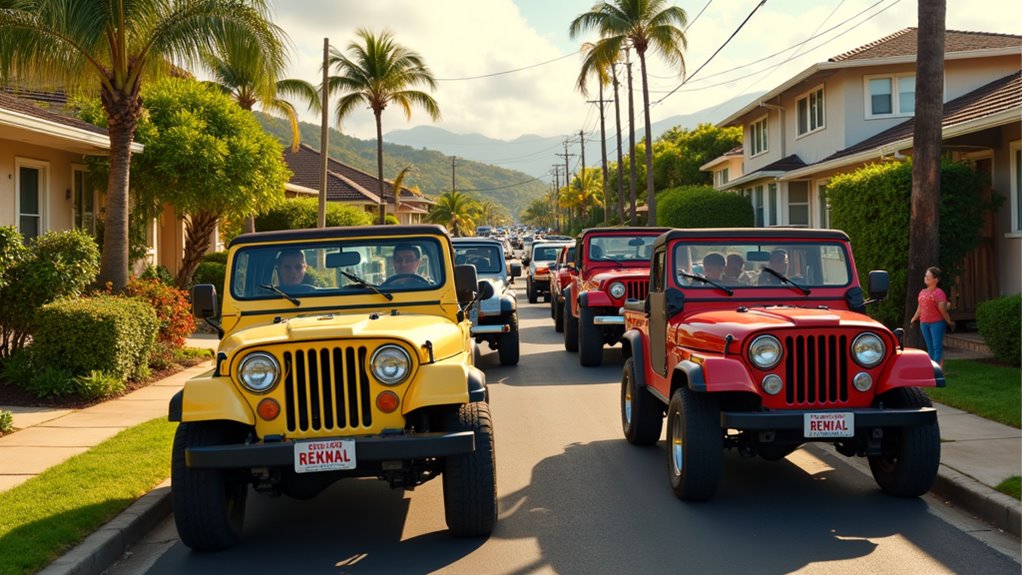
When you visit paradise without considering its residents, you’re participating in a complex issue affecting Hawaiian communities. Short-term rentals have driven up housing costs, making it difficult for locals to afford homes in their own neighborhoods.
Before booking accommodations, research whether your rental is properly licensed and located in an appropriate zone. Avoid staying in residential areas where tourism disrupts daily community life. Instead, choose hotels or legal vacation rentals in designated tourist areas. The elimination of vacation rentals in West Maui under Mayor Bissen’s plan aims to address these housing challenges.
Respect sacred sites by following posted guidelines and never trespassing on private property. Keep noise levels down, especially in residential neighborhoods. Both Honolulu and Kona offer excellent tourist accommodations that minimize impact on local communities. Support local businesses directly rather than large chains to ensure your tourism dollars benefit the community you’re visiting.
Remember that Hawaiian neighborhoods are homes, not just backdrops for your vacation photos.
You’ll make your Hawaiian vacation absolutely catastrophic if you ignore these warnings. One wrong step could turn your dream trip into a nightmare of fines, injuries, or cultural offenses. By respecting sacred sites, following safety rules, and considering local communities, you’re not just being a good tourist—you’re ensuring you’ll actually enjoy paradise instead of experiencing Hawaii’s dark side. The choice is yours.